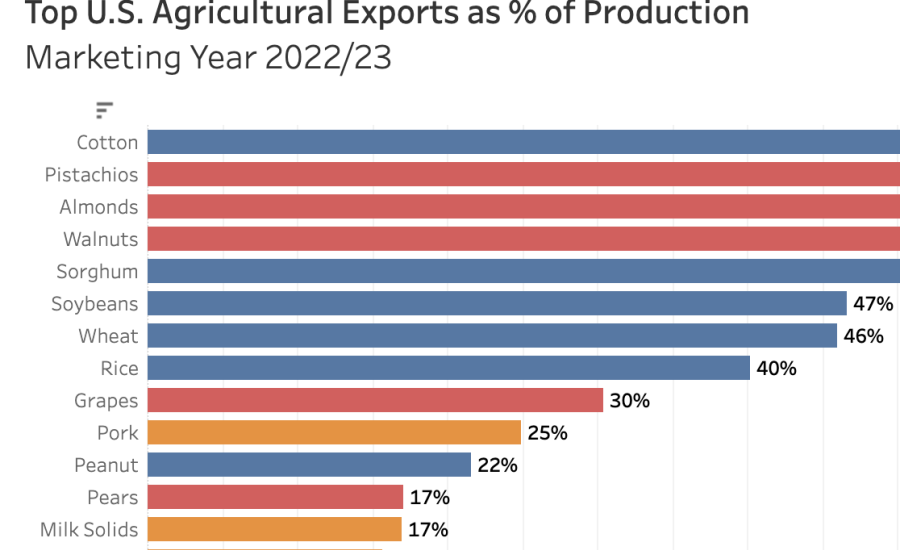Browse Data and Analysis
Filter
Search Data and Analysis
- 10 results found
- (-) Cotton and Hemp
- (-) May 2024
- (-) 2012
- Clear all
Ukraine established a simplified procedure for temporary registration of genetically engineered cotton varieties only.
U.S. agricultural exports are a critical source of farm income. The USDA Economic Research Service estimates that on average 23 percent of the output of nonmanufactured agricultural products were exported between 2013 and 2022.
Early spring precipitations in Andalucía came as a relief, refilling water reservoirs. However, this allowed for only a marginal recovery in area planted to cotton, as rains arrived when planting plans were already in place and largely oriented to less water-demanding crops such as winter grains or early spring-planted sunflower.
The 2023 U.S. Agricultural Export Yearbook provides a statistical summary of U.S. agricultural commodity exports to the world during the 2023 calendar year.
Monthly report on crop acreage, yield and production in major countries worldwide. Sources include reporting from FAS’s worldwide offices, official statistics of foreign governments....
This monthly report includes data on U.S. and global trade, production, consumption and stocks, as well as analysis of developments affecting world trade in cotton.
The global cotton industry is still readjusting to lower post-pandemic demand, and Uzbekistan wasn’t spared the effects of the market overhang. Uzbekistan's strong vertical integration and government support for the industry have helped drive both its resiliency and recovery.
Turkey was the 11th-largest export market for U.S.agricultural products in calendar year 2011.
High cotton prices, especially relative to man-made fibers, have helped accelerate the decline in cotton’s share of global fiber consumption over the last several years.
Brazilian crop and livestock production continues to expand, building on rapid gains over the past few decades.

